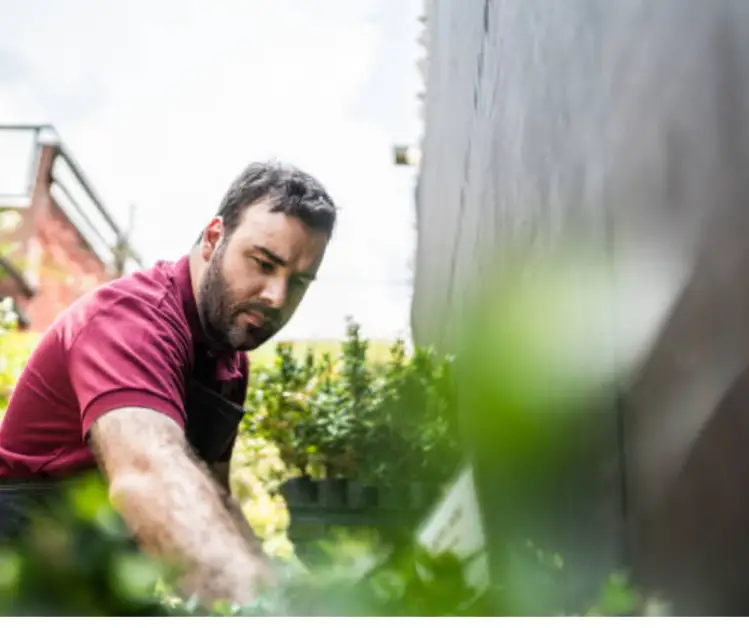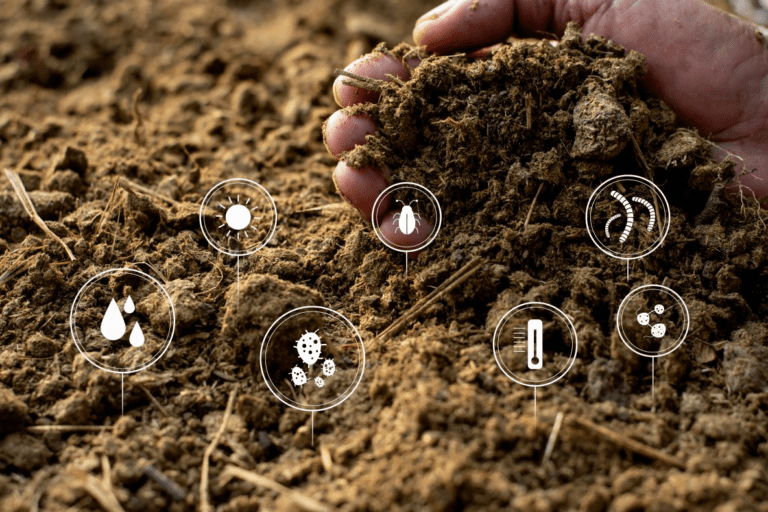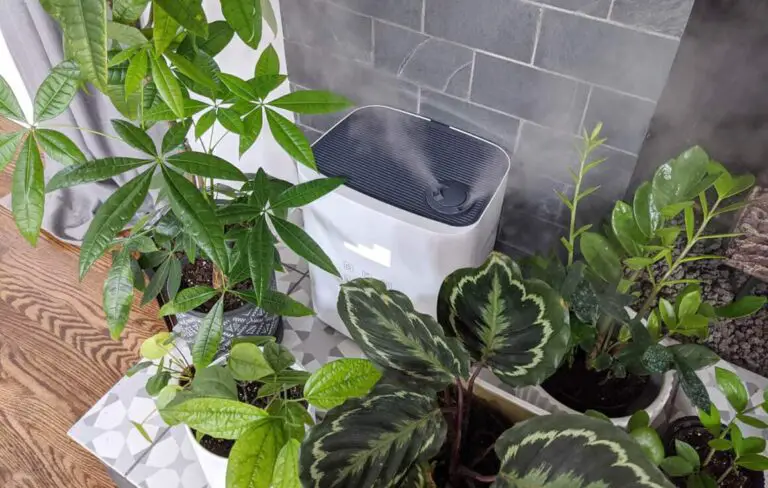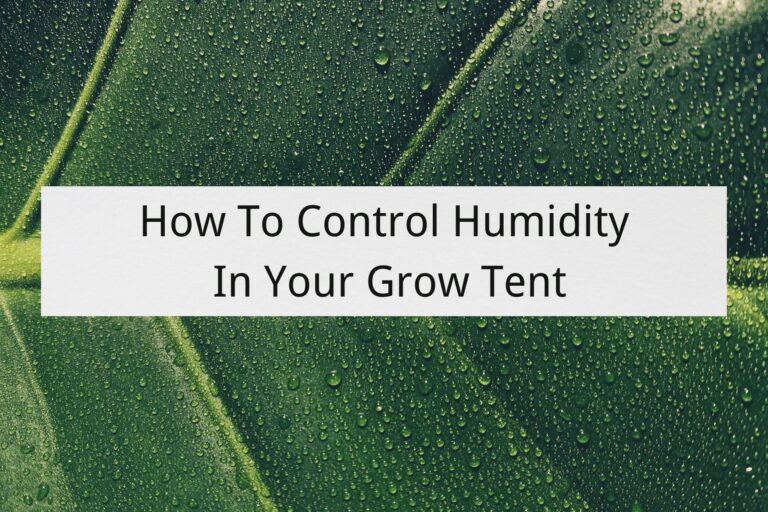Caring for Your Plant Cuttings
Table of Contents
Selecting the Right Cutting: Choosing the Best Plant Material for Propagation
When it comes to plant propagation, selecting the right cutting is crucial for success. Choosing the best plant material ensures that you have a healthy, vigorous start for your new plants. To make the right selection, there are a few key factors to consider.
Firstly, it’s important to choose a plant that is in good health. Look for plants that have vibrant, green foliage and are free from disease or pest damage. This will give your cutting the best chance of rooting and thriving. Additionally, consider the age and maturity of the plant. Generally, younger plants tend to root more easily than older ones, so it may be wise to choose cuttings from plants that are still in their early stages of growth.
Furthermore, consider the type of plant you’re working with. Different plants propagate best through different methods, such as stem cuttings, leaf cuttings, or root cuttings. Research the specific plant species you’re interested in propagating to determine the optimal propagation method. Additionally, take into account the time of year. Some plants propagate best during certain seasons, so it’s important to choose cuttings accordingly.
By carefully selecting the right cutting, you set the foundation for successful propagation. Take the time to assess the health and maturity of the plant, as well as the appropriate propagation method and timing. With these considerations in mind, you can ensure that your efforts yield healthy, thriving plants.
a table is given below
| Factor | Description |
|---|---|
| Plant Species | Different plant species have varying preferences for moisture retention, aeration, and nutrient requirements. Consider the specific needs of the plant you intend to propagate. |
| Propagation Method | The method used (such as stem cuttings, leaf cuttings, or seed starting) may influence the choice of propagation medium. Each method requires specific conditions for success. |
| Watering Frequency and Environment | Assess how often the propagated material needs watering and the environmental conditions (such as humidity and temperature) it will be exposed to during propagation. |
Preparing the Tools and Materials: Essential Supplies for Successful Plant Propagation
To successfully propagate plants, it is crucial to have the right tools and materials at your disposal. By ensuring you have everything you need before you begin, you can set yourself up for a smooth and efficient propagation process. Here are some essential supplies that every gardener should have on hand for successful plant propagation.
First and foremost, a sharp and clean pair of pruning shears is a must-have tool. This will enable you to make precise and clean cuts, minimizing the risk of damage or infection to the parent plant and the cuttings. Additionally, having a pair of bypass pruners with a spring mechanism can provide ease and comfort during repetitive cutting tasks. You can also consider investing in a sterilizing agent, such as rubbing alcohol, to disinfect your tools between each cut, preventing the spread of pathogens.
Next, disposable gloves are highly recommended to protect both your hands and the plants from any potential contaminations. Gloves ensure a hygienic environment and reduce the risk of transmitting diseases or pests. Opt for gloves made of a breathable material, such as latex or nitrile, that allows for dexterity and sensitivity while providing adequate protection. Moreover, having a clean, damp cloth or a spray bottle filled with water nearby is useful for wiping off any debris or sap that may accumulate on your tools or hands, ensuring a clean and tidy workspace.
In addition to tools, you will also need various materials to support the propagation process. One crucial item is a sterile propagation medium, such as a quality seed-starter mix or a mix specifically formulated for cuttings. This medium provides a well-draining yet moisture-retaining environment that promotes healthy root development. Additionally, having a rooting hormone powder or gel on hand can enhance the chances of successful rooting by stimulating the formation of roots. It is essential to follow the manufacturer’s instructions carefully when applying rooting hormones to ensure the correct dosage and application method.
By equipping yourself with these essential supplies, you can create an optimal environment for propagating plants successfully. These tools and materials will not only aid in ensuring clean and precise cuts but also provide the necessary support for root development. Now that you have gathered your tools and materials, it’s time to delve into the techniques for taking clean and healthy plant cuttings to optimize the success of your propagation efforts.
Making the Perfect Cut: Techniques for Taking Clean and Healthy Plant Cuttings
To ensure successful propagation, it is crucial to master the art of making the perfect cut when taking plant cuttings. This technique not only promotes clean and healthy propagation but also increases the chances of successful root formation.
The first step is to select a healthy plant specimen from which to take the cutting. Look for a young, vigorous shoot that is free from any signs of disease or pest infestation. Using sharp and sterilized pruning shears, make a swift and precise cut at a 45-degree angle, just below a node. This angle increases the surface area available for root formation and prevents water accumulation, reducing the risk of rot. Remember, a clean cut creates a smooth surface, minimizing damage to the plant tissue and reducing the chances of infection.

Propagation Medium: Creating an Ideal Environment for Root Formation
Creating an ideal environment for root formation is crucial for successful plant propagation. The propagation medium plays a critical role in providing the necessary support, moisture, and aeration for roots to develop and grow. A well-chosen medium can greatly enhance the success rate of propagating plant cuttings.
When selecting a propagation medium, it is important to consider its physical properties, such as texture, water-holding capacity, and drainage. A medium that is too dense or compacted can hinder root growth, while one that is too porous may not retain enough moisture. The ideal medium should strike a balance, providing good water retention while allowing excess moisture to drain away.
Various materials can be used as propagation mediums, including peat moss, perlite, vermiculite, coconut coir, and a mixture of these components. Each material has its own advantages and disadvantages, so it is important to choose the one that suits the specific needs of the plant being propagated. For example, peat moss retains water well and provides a stable environment for roots, but it may not be the best choice for plants that require excellent drainage. On the other hand, perlite and vermiculite are lightweight and provide good aeration, but they may need to be supplemented with other materials to improve their water-holding capacity.
In addition to choosing the right medium, it is essential to properly prepare it before use. This includes sterilizing the medium to eliminate any potential pathogens that could harm the cuttings. Sterilization can be achieved by baking the medium in an oven or using a microwave, following specific guidelines for each material.
By carefully selecting and preparing the propagation medium, gardeners can create an optimal environment for root formation and increase the chances of successful plant propagation.
Optimal Light and Temperature: Providing the Right Conditions for Healthy Growth
The optimal light and temperature conditions are crucial factors in ensuring healthy growth for your propagated plants. Providing the right balance of light and temperature will promote vigorous growth and improve the success rate of your propagation efforts.
Light is essential for photosynthesis, the process by which plants convert light energy into chemical energy. When selecting the lighting conditions for your cuttings, consider their natural habitat. Different plant species have varying light requirements, so it’s important to match their needs. For instance, plants that come from shaded areas may not tolerate direct sunlight, while sun-loving plants may require full sun exposure. Ensure that your propagated plants receive the appropriate amount of light by placing them in locations with the correct light intensity.
Temperature also plays a significant role in promoting healthy growth. Most plants prefer temperatures between 65 and 75 degrees Fahrenheit (18 to 24 degrees Celsius) for optimal growth. However, it’s important to research the specific temperature preferences of the plant species you are propagating. Some plants may require slightly higher or lower temperatures to thrive. Maintain a consistent temperature within the recommended range to promote healthy root development and overall plant growth.
By understanding and providing the optimal light and temperature conditions, you can create an environment that supports healthy growth and ensures the success of your plant propagation endeavors.
Humidity and Moisture: Balancing Watering Needs to Promote Root Development
Maintaining the right balance of humidity and moisture is crucial when propagating plants from cuttings. A controlled environment that provides adequate humidity and moisture levels will greatly promote root development, increasing the chances of successful propagation.
Humidity plays a vital role in cutting care as it helps to prevent excessive moisture loss through the leaves. By creating a humid environment, the cuttings can continue to take up water through their stems and leaves, ensuring they remain hydrated during the rooting process. An ideal humidity level for cuttings is around 70-80%. This can be achieved by using a plastic covering, such as a propagator lid or a clear plastic bag, to create a mini greenhouse effect. This not only helps to retain moisture around the cuttings but also prevents them from drying out too quickly. Regular misting of the leaves can also help to increase humidity levels. It is important to monitor the humidity levels closely and make adjustments as needed to ensure an optimal environment for root development.
| Factor | Description |
|---|---|
| Humidity | Humidity in the propagation environment significantly influences water loss through transpiration. As humidity decreases, cuttings wilt faster due to increased transpiration. Maintaining optimal humidity levels is crucial for preventing dehydration and promoting healthy root growth. |
| Moisture Management | Proper moisture management during propagation is essential. Unrooted cuttings require water to prevent desiccation and support processes like photosynthesis. However, excessive moisture can lead to waterlogged substrates, uneven rooting, and rot. Propagators should strike a balance by providing enough moisture without over-misting or saturating the substrate. |
| Species-Specific Requirements | Different plant species have varying moisture needs during propagation. Some crops require more misting to remain turgid, especially in the initial days, while others need drier conditions. Grouping species with similar misting requirements simplifies management. |
Rooting Hormones: Understanding the Benefits and Proper Application
Rooting hormones play a vital role in successful plant propagation, providing numerous benefits and aiding in the proper application of cuttings. These hormones are naturally occurring or synthetic substances that stimulate root growth and development in plant cuttings. By understanding the benefits and proper application of rooting hormones, gardeners can enhance the success rate of their propagation endeavors.
One of the primary benefits of rooting hormones is their ability to enhance root formation in cuttings. These hormones contain auxins, which are plant growth regulators that promote the production of adventitious roots. Adventitious roots are roots that develop from non-root tissues, such as stems or leaves. By applying rooting hormones to the base of a cutting, gardeners can stimulate the growth of these roots, increasing the chances of successful propagation.
In addition to promoting root growth, rooting hormones also improve the overall survival rate of cuttings. The application of these hormones helps reduce stress on the cutting by providing it with essential nutrients and hormones. This increased survival rate ensures that more cuttings successfully take root and develop into healthy plants. Furthermore, rooting hormones can improve the uniformity of root formation, resulting in a more consistent and desirable end product.
When it comes to the application of rooting hormones, it is essential to follow the instructions provided by the manufacturer. The proper amount and concentration of hormone to use depend on the plant species and the type of cutting being propagated. It is crucial to apply the hormone to the base of the cutting, ensuring that it comes into direct contact with the stem or leaf tissue. This contact allows for effective absorption and signaling within the plant, triggering root development.
Overall, rooting hormones offer significant benefits and are an invaluable tool for successful plant propagation. By understanding their benefits and using them appropriately, gardeners can enhance the success rate of their cutting propagation, leading to healthy and thriving plants. So, next time you embark on a propagation project, consider incorporating rooting hormones for optimal results.
Potting and Transplanting: Moving Cuttings to Their Permanent Homes
When it comes to potting and transplanting cuttings, attention to detail is crucial for ensuring their successful establishment in their permanent homes. Before moving the cuttings, it is important to prepare the pots or containers that will serve as their new habitat. Select pots that are the appropriate size for the root system and have adequate drainage holes to prevent water logging. Additionally, fill the pots with a well-draining potting mix that is suitable for the specific plant species being propagated. The potting mix should provide the necessary nutrients and also have good moisture holding capacity to support healthy root development.
Once the pots are prepared, the next step is to carefully remove the cuttings from their propagation environment. Handle the cuttings with care, ensuring that the roots and delicate stems are not damaged during the process. Gently loosen the growing medium around the roots to avoid any disruption to the root system. Place each cutting into its designated pot, making sure that the roots are properly positioned and covered with the potting mix. Lightly press the potting mix around the base of the cutting to secure it in place. After potting, water the cuttings thoroughly, allowing the excess water to drain away. Finally, place the newly potted cuttings in an appropriate growing location, taking into consideration factors such as light, temperature, and humidity that are conducive to their growth and development.
Proper potting and transplanting techniques are essential for the long-term success of propagated plant cuttings. By following these steps diligently, you can increase the chances of the cuttings thriving in their new environment and ultimately achieving healthy and vigorous plants.

Monitoring and Troubleshooting: Identifying and Addressing Common Issues in Cutting Care
Once you have taken cuttings and started the propagation process, it’s important to closely monitor and troubleshoot any issues that may arise. Identifying and addressing common problems in cutting care is crucial to ensure the success of your propagation endeavors. By being proactive and attentive, you can prevent potential setbacks and promote healthy growth in your plants.
One of the most common issues that gardeners face during cutting care is the development of fungal or bacterial diseases. These can manifest as discoloration, wilting, or a slimy texture on the cuttings. To address this, it is important to maintain proper hygiene and sanitation practices. Clean and disinfect your tools and materials before and after each use, and ensure that your propagation environment is clean and well-ventilated. Additionally, avoid overwatering and provide adequate air circulation to prevent the growth of fungi and bacteria. If you do encounter signs of disease, promptly remove the affected cuttings to prevent the spread of infection to healthy plants.
Another challenge in cutting care is the presence of pests. Insects such as aphids, mealybugs, and spider mites can wreak havoc on your cuttings, causing stunted growth or even death. To combat these pests, regular observation is essential. Inspect your cuttings frequently for any signs of infestation, such as small insects, webs, or yellowing leaves. If pests are detected, you can employ various methods to control them. This can include using insecticidal soaps, applying natural predators like ladybugs, or introducing beneficial nematodes to the growing medium. Integrated pest management techniques can also be utilized, combining cultural, biological, and chemical control methods for a holistic and effective approach.
By diligently monitoring and addressing common issues in cutting care, you can ensure that your propagated plants thrive and flourish. Stay vigilant, maintain good hygiene practices, and take swift action when necessary. With careful observation and swift intervention, you can enjoy successful propagation and the joy of seeing your cuttings develop into vibrant, healthy plants.
Gradual Acclimatization: Preparing Cuttings for Life Outside Their Propagation Environment
Gradual acclimatization plays a crucial role in the successful transition of plant cuttings from their propagation environment to their permanent homes. This delicate process ensures that the young plants adjust to the external conditions gradually, mitigating the risk of shock and optimizing their chances of thriving in their new surroundings.
To begin the acclimatization process, it is important to expose the cuttings to increasing amounts of light over time. Start by placing them in a location with partial shade or filtered sunlight, gradually increasing their exposure to direct sunlight as they adapt. This gradual exposure prepares the young plants for the intensity of full sunlight, allowing them to develop robust and healthy foliage.
In addition to light, temperature is another crucial factor to consider during acclimatization. The temperature in the propagation environment is often more controlled than the external conditions, so the plants need time to adjust to the fluctuations they will encounter outdoors. Start by subjecting the cuttings to slightly lower temperatures each day, mimicking the natural temperature variations they will experience in their new environment. This practice enables the plants to develop the necessary hardiness to withstand temperature extremes and enhances their overall resilience.
By implementing a careful and gradual acclimatization process, gardeners can maximize the chances of success when transplanting cuttings. Remember to monitor the progress of the young plants closely, making adjustments as needed to ensure their smooth transition and continued growth outside their propagation environment.
Why is it important to select the right cutting for propagation?
Selecting the right cutting is crucial because it determines the success and quality of the propagated plant. Choosing healthy and disease-free cuttings increases the chances of successful root formation and overall plant growth.
What tools and materials are necessary for successful plant propagation?
Some essential supplies include sharp pruning shears, a clean cutting surface, sterile propagation medium, rooting hormone, containers or pots, and a misting bottle for maintaining humidity levels.
How do I make a clean and healthy cut when taking plant cuttings?
To make a clean cut, use sharp pruning shears or a knife that has been sterilized to prevent the spread of diseases. Ensure the cut is made just below a node or bud, and avoid crushing or damaging the stem.
What is an ideal propagation medium for root formation?
An ideal propagation medium should provide good aeration, moisture retention, and sufficient drainage. Some common mediums include perlite, vermiculite, peat moss, or a mixture of these components.
How can I provide the optimal light and temperature conditions for healthy growth?
Place the cuttings in a well-lit area with indirect sunlight or provide artificial light using grow lights. Maintain a consistent temperature between 65-75°F (18-24°C) to promote root development and prevent stress.
How should I balance watering to promote root development?
Water the cuttings thoroughly, allowing excess water to drain out. Check the moisture level of the propagation medium regularly and avoid overwatering, which can lead to root rot. Mist the cuttings periodically to maintain humidity levels.
What are rooting hormones, and how should they be applied?
Rooting hormones are substances that enhance root formation. They can be applied as a powder, gel, or liquid to the cut end of the stem before planting. Follow the manufacturer’s instructions for proper application and dosage.
How do I transplant the cuttings to their permanent homes?
Transplant the cuttings into individual pots or containers filled with a well-draining potting mix once they have developed a healthy root system. Handle the delicate roots with care to avoid damage.
How can I identify and address common issues in cutting care?
Common issues include wilting, yellowing leaves, fungal diseases, or pest infestations. Regularly monitor the cuttings for any signs of distress and take prompt action by adjusting watering, improving ventilation, or treating diseases and pests.
Why is gradual acclimatization important for cuttings?
Gradual acclimatization allows the cuttings to adapt to the conditions outside their propagation environment. It helps prevent shock and stress by slowly exposing them to sunlight, outdoor temperatures, and varying humidity levels.







